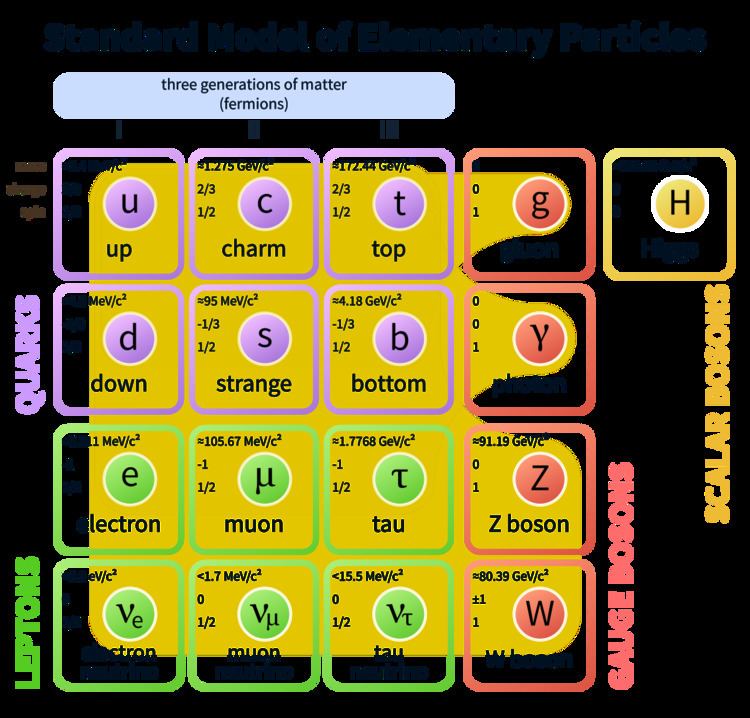 | ||
Weak neutral current interactions are one of the ways in which subatomic particles can interact by means of the weak force. These interactions are mediated by the
Z
boson. The discovery of weak neutral currents was a significant step toward the unification of electromagnetism and the weak force into the electroweak force, and led to the discovery of the W and Z bosons.
Contents
Definition
The neutral current that gives the interaction its name is that of the interacting particles. For example, the neutral-current contribution to the
ν
e
e−
→
ν
e
e−
elastic scattering amplitude
where the neutral currents describing the flow of the neutrino and of the electron are given by
and
The
Z
boson can couple to any Standard Model particle, except gluons and photons. However, any interaction between two charged particles that can occur via the exchange of a virtual
Z
boson can also occur via the exchange of a virtual photon. Unless the interacting particles have energies on the order of the
Z
boson mass (91 GeV) or higher, the virtual
Z
boson exchange has an effect of a tiny correction (
Z
boson weren't available until 1983.
On the other hand,
Z
boson interactions involving neutrinos have distinctive signatures: They provide the only known mechanism for elastic scattering of neutrinos in matter; neutrinos are almost as likely to scatter elastically (via
Z
boson exchange) as inelastically (via
W
boson exchange). Weak neutral currents were predicted in 1973 by Abdus Salam, Sheldon Glashow and Steven Weinberg, and confirmed shortly thereafter in 1973, in a neutrino experiment in the Gargamelle bubble chamber at CERN.
In simple terms
The weak force is best known for its role in nuclear decay. It has very short range but is the only force (apart from gravity) to interact with electrons, neutrinos and quarks. The weak force, like other forces, is communicated via exchange particles. Perhaps the most well known of the exchange particles for the weak force, the W particle - involved in beta decay - has an electric charge (both positive and negative W particles exist). However, there is also an exchange particle for the weak force that does not have any electrical charge, the Z boson. Exchange of a Z boson leaves the interacting particles unaffected, except for a transfer of momentum, spin and energy. Because there is no transfer of electrical charge involved, exchange of Z particles is referred to as “neutral” in the phrase “neutral current”. However the word “current” here has nothing to do with electricity - it simply refers to the exchange of the Z particle.
